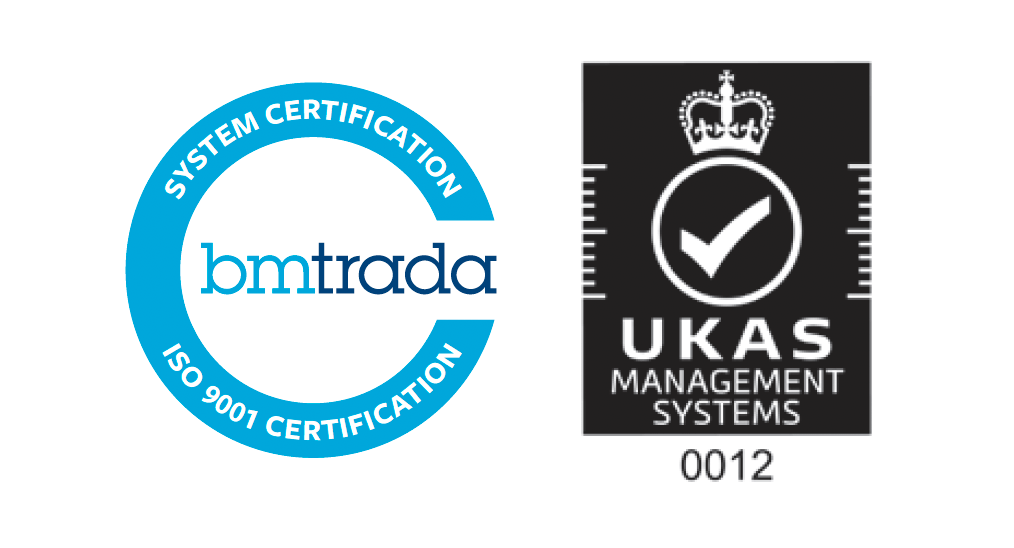The global life sciences industry is undergoing a period of immense change driven by scientific advances and evolving regulatory and access environments. Health innovations are emerging at a rapid pace, promising improved outcomes for patients. However, bringing innovations to market requires companies to navigate increasingly complex and shifting requirements relating to pricing, reimbursement, and access. These developments present opportunities and challenges for life sciences companies looking to recoup investments in R&D and make cutting-edge therapies available to patients worldwide.
Despite historical challenges relating to the uptake of innovation, a number of recent developments have now come together to ensure that the United Kingdom stands out as a highly attractive market for life sciences innovation. The UK brings together a highly favourable policy environment, a robust and expanding data infrastructure, a strong ethos of collaboration between stakeholders, and a range of early access opportunities. The US will obviously remain both the largest market and very different from Europe which will mean it is the top driver for Pharma, but these developments in the UK make it a very good place to test models that could be delivered in other markets facing similar challenges.
Global challenges
Major healthcare markets are facing some significant new challenges. In the United States, major reforms like the Inflation Reduction Act (IRA) have introduced considerable uncertainty around how the government will approach pricing and reimbursement for pharmaceuticals. Analyses indicate IRA reforms could result in 31% less revenue for drug companies along with 135 fewer new drug approvals over the next twenty years.[1]
In the European Union, new pharmaceutical legislation is poised to create mandatory Europe-wide schedules for product launches along with reduced data exclusivity protections. Industry groups argue this will disadvantage European patients’ access to innovative treatments compared to other regions. The reforms are estimated to reduce EU pharmaceutical R&D investment by €2 billion annually. Analysts project the EU’s share of global drug R&D may drop from 32% in 2020 to 21-25% by 2040.[2]
Emerging markets like China, Brazil, and India which were considered to be highly promising for life sciences have seen declining growth rates as well as divergent healthcare policies that are challenging to navigate. In addition, weaker intellectual property protections and significant market access barriers in these countries reduce the viability of recouping investments in R&D.[3],[4]
A number of mid-sized but established life sciences markets like Switzerland, Singapore, and the Nordics have cultivated collaborative environments between regulators, payers and providers that facilitate efficient innovation. Co-ordinated approaches are now being applied to clinical trial approvals, health technology assessments, and even healthcare procurement. These cross border collaborations are often an effort to overcome the limited population scale represented by these markets, which ultimately constrains their global influence. Companies may increasingly leverage the advantages of efficiency and coordination offered by these hubs for regional launches.
The changing landscape in the UK
Similar to the US and EU, the UK life sciences ecosystem has historically faced challenges that affected its favourability as a hub for R&D and commercialisation. The UK saw declining numbers of late-stage clinical trials, prompted in part by uncertainties resulting from Brexit. Companies have faced low margins due to strict health technology assessments and substantial price discounts. In addition, uptake of innovation has been historically “low and slow” resulting in revenues that do not represent the volume of eligible patients. Our own analysis of this suggests that there is a more nuanced picture, but one that is highly variable; there have been some excellent uptake case examples in specialist medicines as well as disappointments, but primary care prescribing has remained particularly challenging.
However, post-Brexit, the UK government has needed to move swiftly to implement pivotal regulatory and policy changes aimed at rejuvenating the life sciences ecosystem. The result is an environment that cultivates greater investment, research and patient access with the potential for the UK to enhance its status as a global superpower for biopharmaceutical and medtech innovation.
Favourable new approaches to regulation, HTA and reimbursement
The UK has instituted several accelerated regulatory pathways to enable faster patient access to innovative therapies showing promise for areas of high unmet need. The Early Access to Medicines Scheme provides access up to one year before full regulatory approval for patients with critical medical needs. The Innovative Licensing and Access Pathway (ILAP) expedites approval through greater coordination between regulators, HTA and evidence bodies, NHS England and manufacturers.
The MHRA has ensured continued collaboration with international agencies to enable speedier reviews. This includes mutual recognition procedures with the FDA (Food and Drug Administration) and EMA (European Medicines Agency) and participation in multi-country initiatives like Project Orbis and the Access Consortium, which support work sharing and simultaneous regulatory submissions. The MHRA aims to offer the quickest and simplest regulatory approvals globally.
The national HTA agency NICE (National Institute for Health and Care Excellence) has also restructured its processes to facilitate access. NICE now issues interim recommendations earlier based on initial evidence sets while additional real-world data are collected. This is supported by NICE releasing a comprehensive framework outlining best practices for real-world evidence generation and integration. NICE already uses Real World Evidence (RWE) in 20-50% of its evaluations. NICE have also adopted a proportionate approach which offers light-touch, faster evaluations for simpler low-risk treatments.
The new Voluntary Scheme for Branded Medicines Pricing & Access (VPAG) expands NHS spending on innovative drugs by 6.1% annually over the next 5 years and is a clear attempt to shift the balance in favour of innovation over established products. This provides greater certainty after years of imposed low growth caps. An additional £400 million investment by industry has been ring-fenced to accelerate work on clinical trials, manufacturing, and in HTA agencies, encouraging UK economic growth, collaboration, and innovation in the sector. Most importantly, some of this funding will be used to explore how to accelerate the adoption and uptake of medicines that have been approved by NICE and to tackle inequity of access across different parts of the country. Along with population health deals, which are aimed at supporting the NHS in identifying and treating eligible patients, this work has the potential to dramatically alter the uptake curves for innovation.
Finally, there are two UK funding mechanisms that specifically offer funding for patient access to promising new drugs while additional real-world data are collected to support value assessments and optimise use. These are the Innovative Medicines Fund and the Cancer Drugs Fund, each with £340m in ring fenced funding.
Rapid advancement of data and real-world evidence capabilities
The UK government has made massive investments to leverage the power and scale of its healthcare data. The Federated Data Platform (FDP) has been commissioned, offering the opportunity to dramatically improve the delivery of NHS services. More importantly for Life Sciences, however, is the consolidation of highly fragmented NHS data sources into Secure Data Environments (SDEs) and then the scaling of this effort to a national level. These emerging infrastructures will provide approved researchers with unprecedented access to national scale datasets spanning primary care, secondary care, prescribing, and genomic data. SDEs offer significant improvements over databases traditionally used by Life Science companies (e.g., CPRD) by offering core linked patient-level data from the primary and secondary care Electronic Medical Records (EMRs) including patient characteristics, healthcare event data with full coding, and prescribing data, all with time stamps, allowing rich insights into not just the burden of disease but patient pathways and health inequalities. While the coverage can vary between be national and sub-national, the diverse patient population allows for nationally representative data with low latency (e.g., less than 2 months). It can also include multi modal data such as pathology slides, diagnostic images, genomics, device data, etc. Additionally, the connection to local clinicians and local place creates a unique opportunity to use NHS data for case finding in rare disease and population health management alike, as well as the ability re-identify patients to invite them to participate in research, diagnostics and treatment through their doctors.
The NHS data scale and breadth offers unparalleled global potential for real-world evidence generation to support regulatory and payer decision-making as well as post-market surveillance. The new data capabilities also enable research innovations like machine learning to generate insights for precision medicine. Significant progress is being made in a short timeframe, and some leading SDEs are already demonstrating what will soon be possible nationally in terms of speed, ease of access and use cases for Life Sciences. All of this has been enabled by a significant shift in UK public support for using data for the ultimate benefit of patients.
Increased emphasis on collaboration and innovation
New partnerships in the UK spanning regulators, HTA bodies, healthcare providers, academia and industry and driven by progressive government policy, such as the UK Life Sciences Vision, seek to foster aligned strategies for bringing impactful innovations to patients. There are 6 targeted missions in critical disease areas like cardiovascular disease, dementia, diabetes, obesity, rare diseases and cancer and innovations in these areas will potentially receive priority when it comes to healthcare delivery. Funding for the Secure Data Environments also entails that they demonstrate commercial progress which means that they are motivated to partner with industry in a way that they were not before.
Conclusion
The UK’s post-Brexit regulatory independence has enabled greater agility to pioneer approaches aimed at accelerating access and has provided a strong impetus for government policy aimed at ensuring the UK stands out as an attractive place for life sciences innovation. The coordinated ecosystem aims to co-create value with relevance worldwide and it is worth pointing out that the UK is ranked 3rd globally in terms of early-stage R&D output. However, more work needs to be done (and is being done) to re-establish the UK as a priority market for later phase clinical research.
The UK has cultivated an increasingly attractive combination of favourable regulatory procedures, robust data infrastructure, and collaborative multi-stakeholder ethos – key attributes that poise it to serve as an influential hub for global life sciences advancement in the years ahead. Significant progress has already been made, but realising the lofty ambitions of becoming a globally recognised Life Sciences Superpower in all domains requires continued concerted efforts between stakeholders to maximise benefits for UK patients and healthcare as well as for broader patient populations worldwide.
About the authors
Ben Richardson is co-founder and Managing Partner at CF, where he leads our work in Life Sciences and Data Innovation.
Mel Walker is Life Sciences Advisor to CF with a wealth of experience in the biopharma and digital health sectors.
Nour Mohanna is an Associate at CF and manages our Life Sciences practice.



